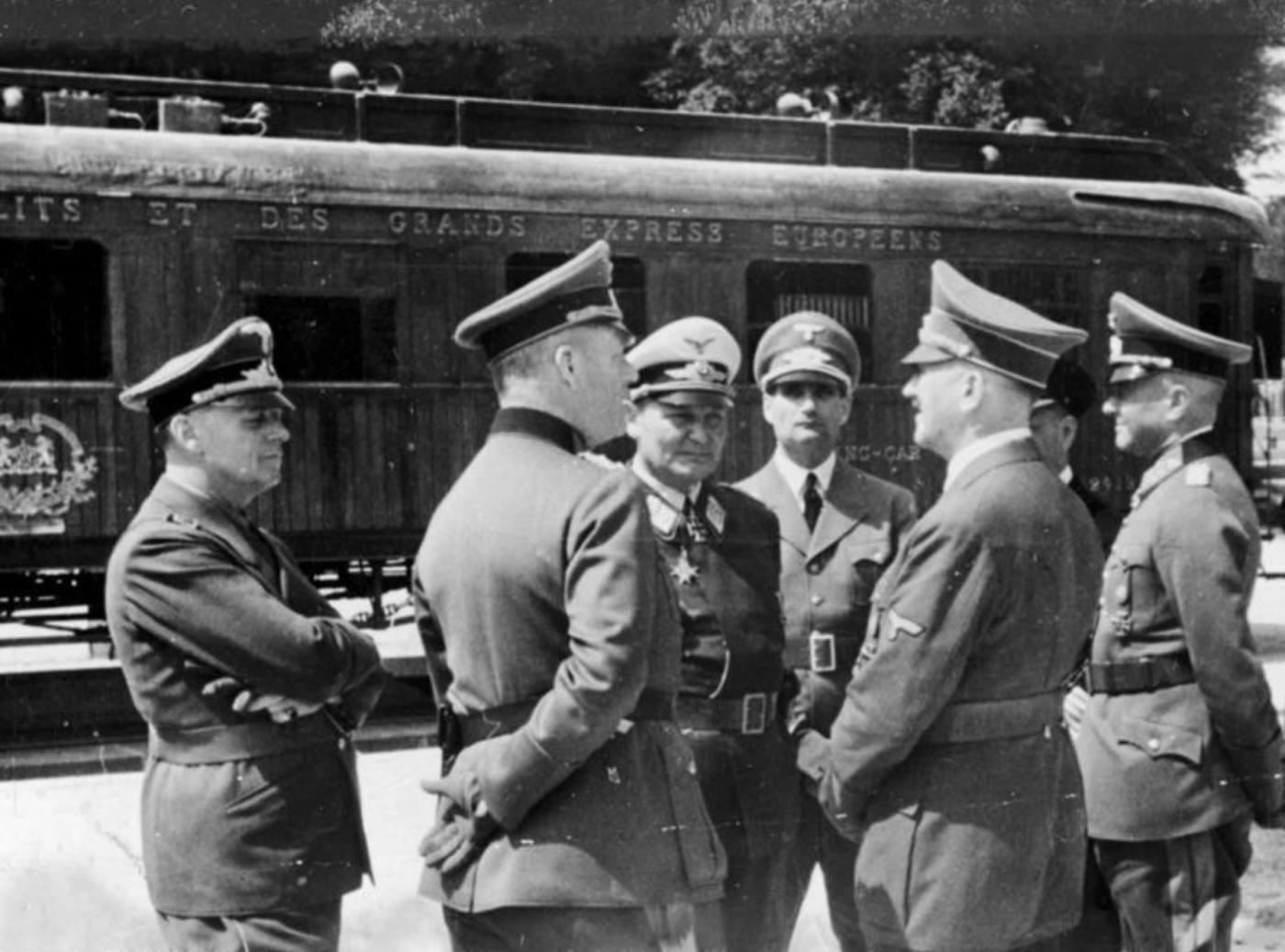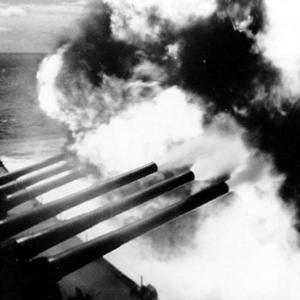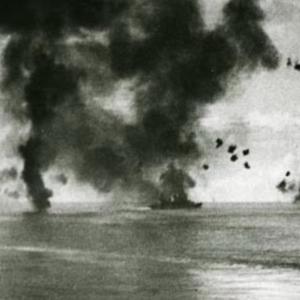
France surrenders to Germany
In the early months of World War II, after the rapid defeat of Poland in 1939, a tense but largely inactive phase of the war known as the "Phoney War" settled over Western Europe. This lull ended decisively in May 1940, when Adolf Hitler launched Fall Gelb (Case Yellow), a powerful and swift German invasion of France through Belgium, the Netherlands, and Luxembourg. The German military employed the revolutionary tactic of Blitzkrieg—a lightning-fast combination of air attacks, rapid tank advances, and mechanized infantry movements—to dismantle French and Allied defenses with alarming speed.
By early June, German forces had encircled the French army, along with the British Expeditionary Force, resulting in the desperate evacuation at Dunkirk. Following this, Germany continued its assault into France. Paris fell on June 14, 1940, and the French government, now led by Marshal Philippe Pétain, recognized that military defeat was imminent. With French resistance collapsing and the country facing full occupation, the government sued for peace.
The German High Command and Hitler, flush with victory, prepared for an armistice. However, this was not to be a mere military agreement; it was to be a carefully crafted spectacle of humiliation. Hitler intended to repay France for the armistice Germany had been forced to sign at the end of World War I in 1918.
The signing of the 1940 Armistice took place on June 22, 1940, in the Compiègne Forest, about 60 kilometers north of Paris. But the location was not chosen arbitrarily—it was steeped in historic symbolism.
In this quiet forest clearing stood a humble railway carriage that had once served as the personal train car of Marshal Ferdinand Foch, the Allied Supreme Commander during World War I. It was inside this very carriage that, on November 11, 1918, the German Empire had signed the armistice that ended World War I—an event considered one of the greatest humiliations in German history.
Hitler ordered that the same rail carriage—Wagon-Lits Company carriage No. 2419D—be retrieved from the museum where it had been preserved and placed back on the exact spot where the 1918 armistice had been signed. German soldiers even destroyed the surrounding monuments commemorating the French victory in World War I.
When the armistice delegation from France, led by General Charles Huntziger, arrived on June 21, Hitler made a theatrical entrance. He refused to sit during the proceedings and left immediately after his brief, silent review of the site, leaving the negotiation to his subordinates. This dramatic act was designed to underscore German dominance and to symbolically avenge the perceived indignity of 1918.
The actual armistice was signed the following day, June 22, 1940, at 6:50 p.m., and came into effect at 12:35 a.m. on June 25, following a brief delay to allow Italy—Germany’s Axis partner—to make final gains before hostilities ceased.
The terms of the 1940 Armistice were harsh and intended to both punish France and ensure its military impotence. Some of the key provisions included:
- Occupation of Northern and Western France: These regions, including Paris and the Atlantic coast, would be occupied by German forces. The remaining "unoccupied zone" in the south, centered around Vichy, would be administered by the new French regime under Marshal Pétain but would remain subordinate to German strategic interests.
- Demobilization of the French Army: The French armed forces were to be drastically reduced. Only a small defensive force was allowed in the unoccupied zone.
- Control of Infrastructure: The French fleet and air force were not to fall into British hands, and French ports, airfields, and railways were to be available for German use.
- Reparations and Costs: France was required to cover the cost of the German occupation, further draining its economy.
For Hitler, the signing of the armistice in Compiègne was a personal and nationalistic triumph. He had meticulously orchestrated a psychological revenge against France. The removal and later destruction of the Compiègne memorials, and the transportation of the railway carriage to Berlin (where it was eventually destroyed by SS forces in 1945), served as lasting symbols of his desire to rewrite the narrative of Germany’s 20th-century history.
For France, the armistice marked a descent into division and occupation. The establishment of the Vichy regime, which collaborated with Nazi Germany, created deep fractures within French society that would take decades to heal.
Today, the site at Compiègne has been restored and serves as a place of remembrance. A replica of the original railway carriage is displayed in a museum there, and the forest clearing has become a symbol not only of defeat and revenge but of the complex, tragic course of 20th-century European history.










